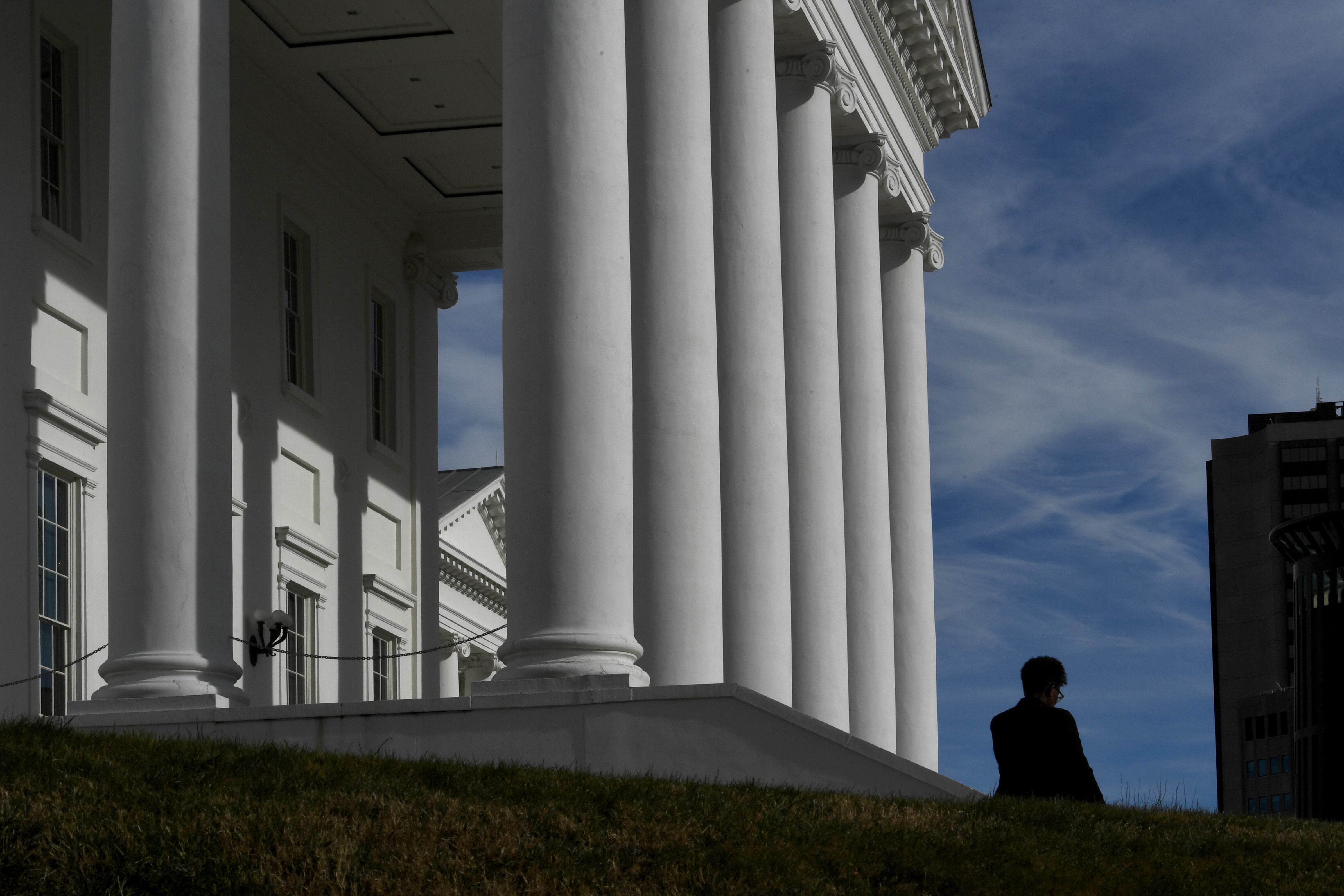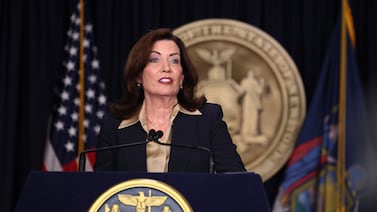Earlier this month, Massachusetts officials unveiled a new plan to hold schools accountable for students’ pandemic recovery. The pushback was swift.
Members of the state board of education questioned the pacing of the plan, which gives schools where students fell furthest behind up to four years to return to pre-pandemic academic levels. Worried the plan would widen achievement gaps, they called for more ambitious goals.
“We must do better,” one board member said, noting the generous federal aid schools received to speed students’ recovery.
At the following board meeting, held last week, school district leaders from across the state showed up to defend the plan. They enumerated the challenges students faced during the pandemic, from housing instability to poor mental health, and the staff shortages and other difficulties that continue to plague schools. The state must take those extraordinary circumstances into account, they argued.
“It is important that accountability systems be not only aggressive,” one superintendent said, “but also achievable and compassionate.”
This debate — in essence, whether to ease up on academic expectations or double down — is flaring up across the country as school accountability systems creak back to life after a pandemic pause.
Mandated by federal and state laws, the systems set goals for schools, rate their performance, and direct support to schools identified as struggling. But the pandemic has complicated every step of that process.
What are reasonable goals after student test scores plunged last year to their lowest level in decades? How to acknowledge schools’ dogged efforts to distribute meals and laptops, offer COVID testing, and track down missing students during a public health crisis, while still insisting that they provide students a rigorous education? And what is the right way to target support when so many students need so much help?
As states try to answer those questions, longstanding disagreements over testing students and rating schools have resurfaced — and calls to rethink those practices have grown.
“I do think the status quo is being questioned,” said Chris Domaleski, associate director of the Center for Assessment. “There’s an appetite for lasting changes to accountability.”
Are states asking too much of schools — or not enough?
During the first two years of the pandemic, the federal government gave schools a reprieve from accountability. Now that grace period is over.
Last year, the U.S. Department of Education resumed enforcement of the Every Student Succeeds Act, or ESSA, the 2015 law that requires states to identify the lowest performing schools based on test scores and other metrics. The agency allowed states to adjust their accountability systems to account for pandemic disruptions, including missing data from when tests were suspended or scaled back.
One of the most common changes was to recalibrate growth measures, which track how much students improve on tests over time. Due to missing data, some states compared students’ test scores from last year to pre-pandemic, while other states simply scrapped that metric. In some cases, those arcane technical changes made a big difference in school ratings.
In Virginia, which made a number of such changes, 10% of schools received a low rating last fall — only slightly more than before the pandemic despite a major decline in test scores. Republican Gov. Glenn Youngkin and state education officials said the school rating system, which was established under a Democratic administration, obscured the extent of students’ academic struggles by giving schools too much credit for progress over pass rates.
“This masks the catastrophic learning losses experienced by our most vulnerable students,” said Jillian Balow, Virginia’s superintendent of education, in a statement when the ratings were released.
In Arizona, the number of grade K-8 schools earning As or Bs actually increased last year compared with before the pandemic. Some critics questioned the high ratings when state tests showed that only a third of students were proficient in math last year.
But Kathy Hoffman, the former state superintendent of education who lost her bid for reelection in November, said schools should be recognized for making progress.
“I do think growth is really important for Arizona schools to be striving for,” she said, adding that students improved their test scores more than expected from 2021 to 2022.
In North Carolina, school grades moved in the opposite direction, with more than 500 additional schools earning D or F grades last fall than did so before the pandemic. In that state, student growth counts for just 20% of a school’s annual rating, compared with 50% in Arizona.
“The current accountability model does not do justice to the hard work that teachers and students put in every day in schools across the state,” said Catherine Truitt, North Carolina’s superintendent of education, in a statement when the results were announced.
California removed student growth from its school ratings last year, but plans to bring it back in 2023 and add additional measures of student progress, said Linda Darling-Hammond, president of the state board of education. Because lower-income students tend to have lower test scores, rating schools on student achievement rather than growth punishes schools serving more poor students, she added.
“Comparing their outcomes in school when you haven’t evened out the playing field for them, either in or outside of school, doesn’t tell you much about what the school is contributing,” said Darling-Hammond, who is also an education professor at Stanford University.
States debate what to do with struggling schools
All the hand wringing over school ratings might suggest that they carry dire consequences for schools. But in most cases, they don’t.
Under ESSA, the main upshot for struggling schools is an increase in federal aid and a requirement to create improvement plans. However, many states have used the law’s flexibility to limit how many schools are identified as struggling, according to an analysis of 10 states by the education advocacy group All4Ed. While some states targeted more than half of schools for extra support, other states identified fewer than 5%, the group found.
Some state officials blame limited funding and capacity for the low numbers, said Anne Hyslop, All4Ed’s director of policy development, who co-authored the report.
“A lot of states will say, ‘We don’t want to over-identify schools, but then not be able to give them money and other resources to actually make improvements,’” she said.
Hyslop said states could have “supercharged” their accountability systems last year by funneling some of their federal pandemic aid to struggling schools. However, she saw little evidence of that happening.
It was a “missed opportunity,” she said, to “see this restart of the accountability system as part of the COVID recovery effort.”
In some states, persistently low-rated schools can face harsh interventions, such as state takeovers. But states typically avoid such drastic measures.
Massachusetts law, for example, allows the state to appoint an official to take control of any chronically low-performing school district. However, only three districts are currently under state control, and Boston struck a deal to avoid that fate last year.
This month, state lawmakers introduced a bill to revoke the state’s authority to take over districts. Instead, the state would have to give more money to struggling schools, and districts would create plans to address the “root causes” of schools’ low achievement. The bill would also end the state’s requirement that high schoolers pass an exam to graduate.
“We definitely think it’s time to change the way we go about assessment and accountability in the state,” said Lisa Guisbond, executive director of the advocacy group Citizens for Public Schools.
But critics say that softening accountability would let schools off the hook for catching students up — even as they have an unprecedented amount of funding to aid their recovery efforts.
“We’re not really interested in listening to excuses for why it can’t be possible or giving more grace,” said National Parents Union co-founder Keri Rodrigues, whose children attend Massachusetts schools. “What we’re looking for is urgency.”
Patrick Wall is a senior reporter covering national education issues. Contact him at pwall@chalkbeat.org.







